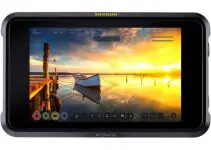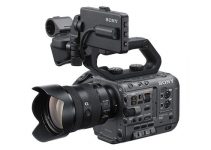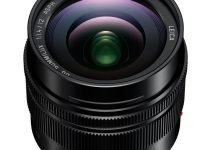It’s been a while, probably since the launch of the iPhone in 2007, that Apple has been accused of drifting away from its loyal user base of professionals. The focus seemed to be centered on consumer devices and mobile software development, but it looks like the table has been turning in the last couple of years.
We now have the iMac Pro available and the much expected modular Mac Pro on its way, so good for us, right? But could it be that these high-end options may not actually be the best on the market?
The silent upgrade that the standard iMac has got in the last weeks does seem intriguing indeed, especially from a filmmaker’s perspective as the comparison to the Pro lineup comes to mind almost in an instant. Max Yuryev has taken upon him to conduct such a test, so, let’s see the results.
First, a little spoiler alert – in some cases the iMac got over 20% faster than the iMac Pro. Not bad, right? It would seem straight away that the regular iMac could be a steal for its price, since it allows to save up to $1,580! Well, that’s not completely the case, since results vary a lot between different scenarios and configurations of the Macs.
In his tests, Max has compared different editing suites, specifically Final Cut Pro, DaVinci Resolve and Premiere Pro alongside some synthetic benchmarks in between.
As for the benchmarks, the iMac seems to take the lead, although the gap varies from test to test getting sometimes higher sometimes lower along the way. Overall, there’s a general predominance of the i9 that, being a higher clocked chip, can take advantage of those boost frequencies in tasks that rely on the CPU’s raw power.
The advantage does not go all the way to the graphics performances, though. The beefier card in the iMac Pro goes above and beyond giving an approximate 20% of performance more than the Vega 48.
When it comes to getting some real-world tests, the outcome is not as expected. The different editing suites give very different results. The big difference in Premiere is due to the poor optimization of the software that boosts up only one core of those available, and near to nothing in terms of graphics card’s usage.
Final Cut and DaVinci instead are using both the CPU and GPU hence produce much different score, that is generally in favor of the regular iMac in H264 based workflows, but there seems to be a huge difference depending on the codec used for the clips.
The iMac Pro, in fact, completely inverts the results when it comes to the much more modern H265 codec, and that is mainly due to the T2 chip it shares with the Mac Mini and the MacBook Pro. This chip is used not only for encryption and authentication but also for hardware encoding and decoding of H265 files, so based on your workflow it may make sense to go for the Pro version.
In general term of performance, these new iMacs are a nice upgrade from previous versions. There is no doubt that they can be very good workstations for filmmakers and editors, just like the higher-line iMac Pros.
Both of the machines are more than capable of handling 4K timelines in scrubbing and editing, so it comes down to the price you get and how much you need those little extras like the additional TB3 ports or the T2 chip alongside the 10GbE port that the iMac Pro can give you. Are they really worth the difference? Well, the answer is up to you.
[source: Max Yuryev]
B&H Order Links:
Apple 27″ iMac with Retina 5K Display (Early 2019)
Apple 27″ iMac Pro with Retina 5K Display (Late 2017)
Disclaimer: As an Amazon Associate partner and participant in B&H and Adorama Affiliate programmes, we earn a small comission from each purchase made through the affiliate links listed above at no additional cost to you.




